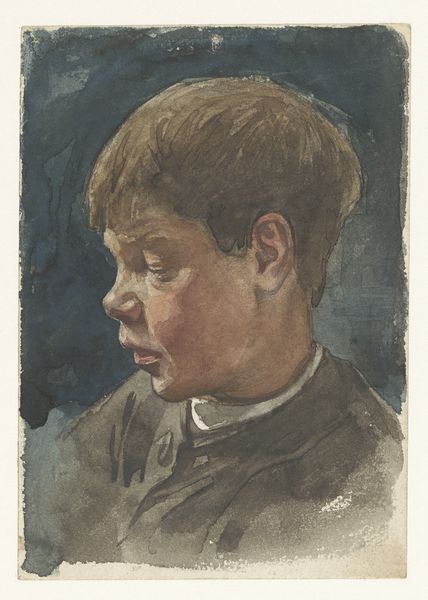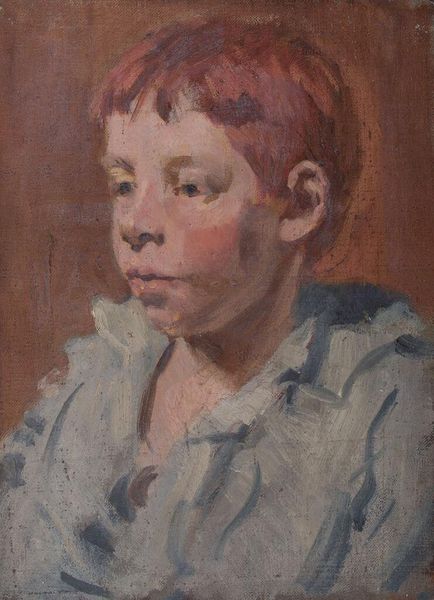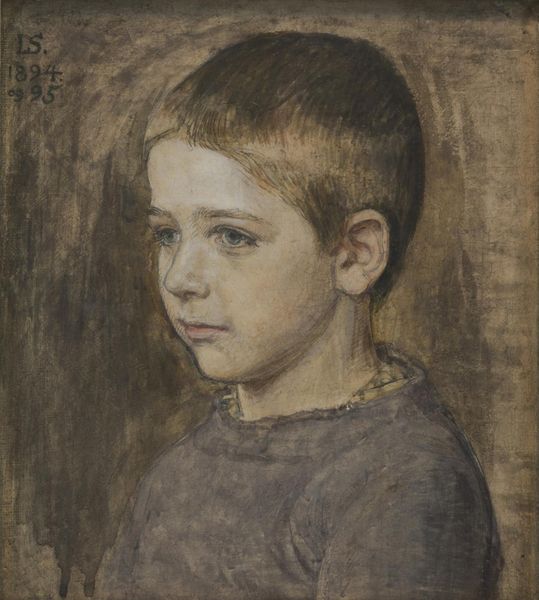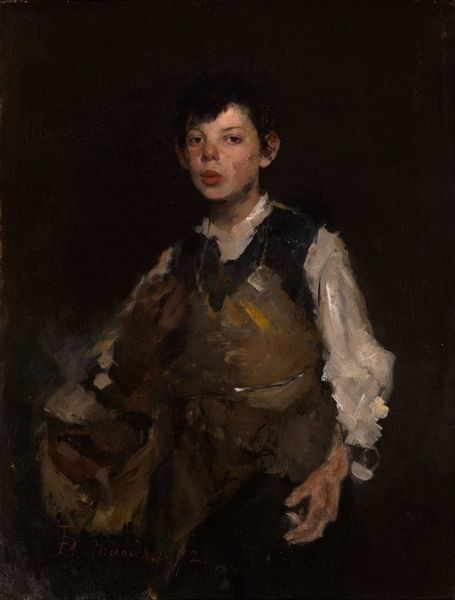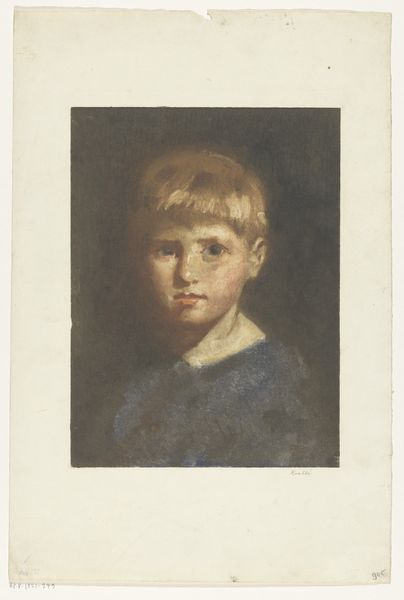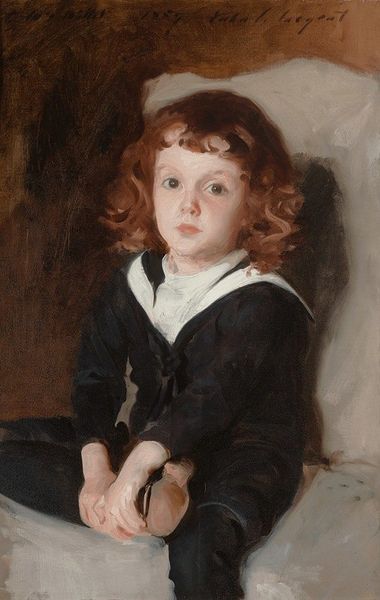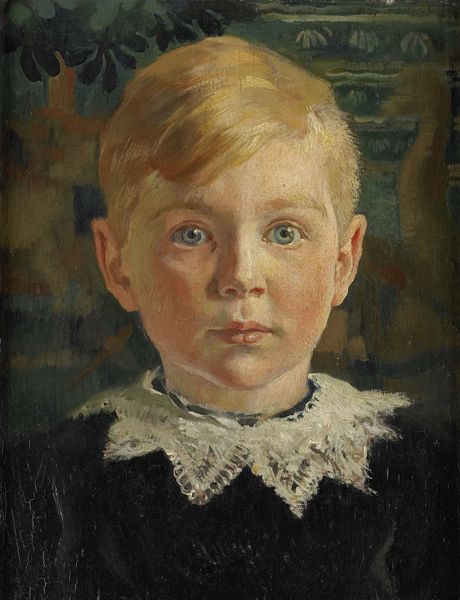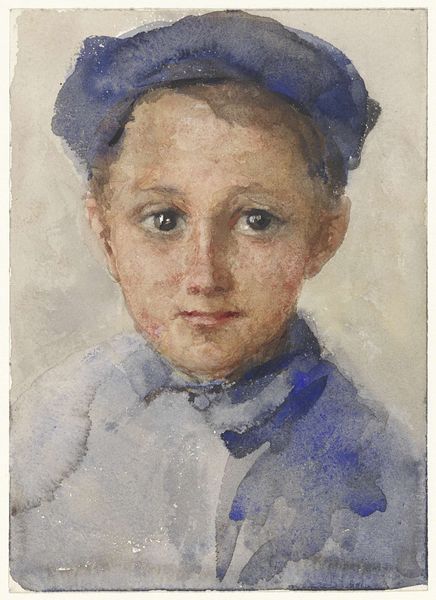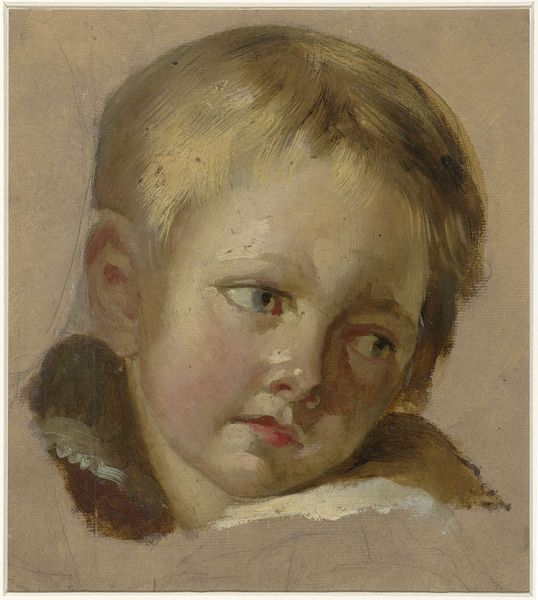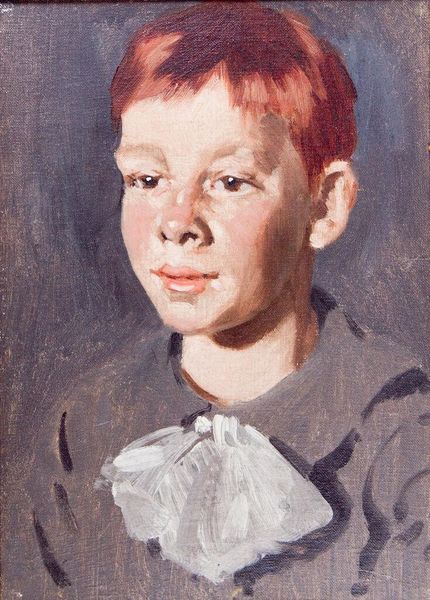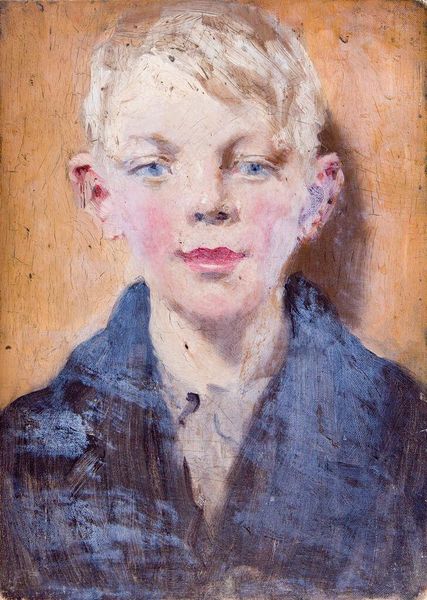
painting, watercolor
#
portrait
#
painting
#
oil painting
#
watercolor
#
intimism
#
realism
Dimensions: height 610 mm, width 445 mm
Copyright: Rijks Museum: Open Domain
Editor: Immediately, the wistful quality of the portrait hits me. There's such vulnerability captured in the subject's gaze. Curator: Here we have Thérèse Schwartze's "Portrait of a Young Boy with Red Hair, Front View", likely created between 1861 and 1918. The work is executed primarily in watercolor, though the application resembles oil paint in its texture and blending, quite rare for its time. Editor: Interesting you bring up the "oil-like" application of watercolor! I see the same blurring of traditional art materials. It mirrors this fascinating period when artists really challenged these divisions. I’m also curious, the work resides at the Rijksmuseum… how does its current context affect its interpretation? Curator: Considering its placement within the Rijksmuseum, we must acknowledge the historical Dutch context that informed the artist's choices. Schwartze came from a family of artists, deeply immersed in the art world’s processes, so its making represents this tension between the conventional art academies of the era and new trends. Editor: True. And considering it’s a child portrait, how much did social expectations around childhood or gender norms at the time of painting potentially play a role in how the subject has been posed and styled here? Curator: Undeniably, there’s a deliberate construction here. The clothing—quite formal, yet muted—speaks to societal constraints on the depiction of childhood innocence. The very choice of watercolour might also be significant. Because watercolour often used as a ‘less serious’ medium, its very use perhaps provided a sense of accessible engagement. Editor: That also reminds us that children from lower socio-economic backgrounds simply weren’t represented. Only select, privileged lives made it to the canvas. You touched on medium choice too, and I agree, that in itself it can signify the creation of something intended for consumption or a casual art market. Curator: Exactly! And it prompts reflection on how our engagement with this piece in the present also reflects that legacy, perpetuating class divides through display within spaces like the Rijksmuseum. Editor: Well, analyzing that link between Schwartze’s labor, materials, social context, and current consumption surely sheds light on our assumptions and power relations imbedded in art itself. Curator: Absolutely! The work encourages an ongoing conversation about both historical representation and continued legacies.
Comments
No comments
Be the first to comment and join the conversation on the ultimate creative platform.

